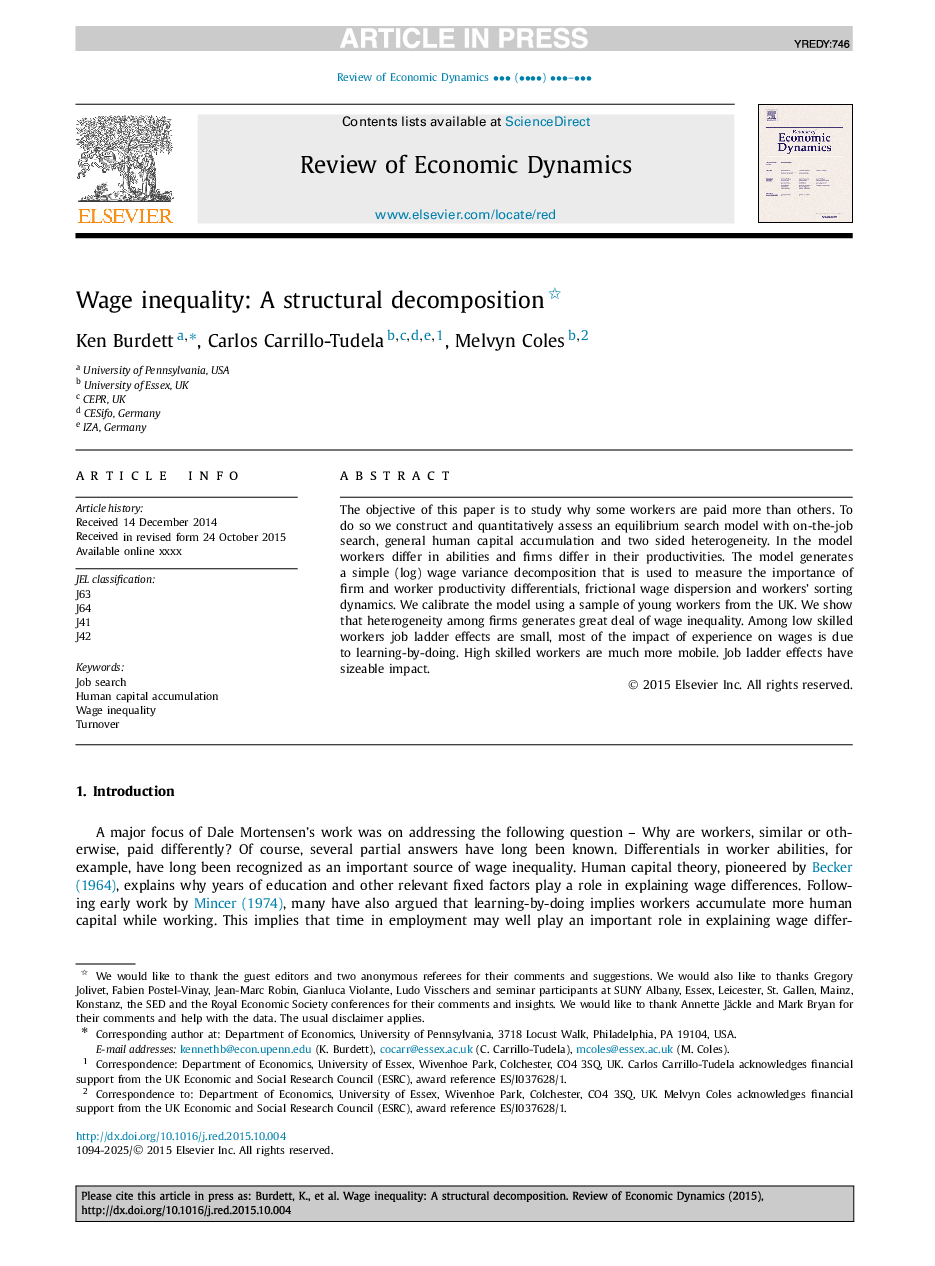| Article ID | Journal | Published Year | Pages | File Type |
|---|---|---|---|---|
| 7388314 | Review of Economic Dynamics | 2016 | 18 Pages |
Abstract
The objective of this paper is to study why some workers are paid more than others. To do so we construct and quantitatively assess an equilibrium search model with on-the-job search, general human capital accumulation and two sided heterogeneity. In the model workers differ in abilities and firms differ in their productivities. The model generates a simple (log) wage variance decomposition that is used to measure the importance of firm and worker productivity differentials, frictional wage dispersion and workers' sorting dynamics. We calibrate the model using a sample of young workers from the UK. We show that heterogeneity among firms generates great deal of wage inequality. Among low skilled workers job ladder effects are small, most of the impact of experience on wages is due to learning-by-doing. High skilled workers are much more mobile. Job ladder effects have sizeable impact.
Related Topics
Social Sciences and Humanities
Economics, Econometrics and Finance
Economics and Econometrics
Authors
Ken Burdett, Carlos Carrillo-Tudela, Melvyn Coles,
